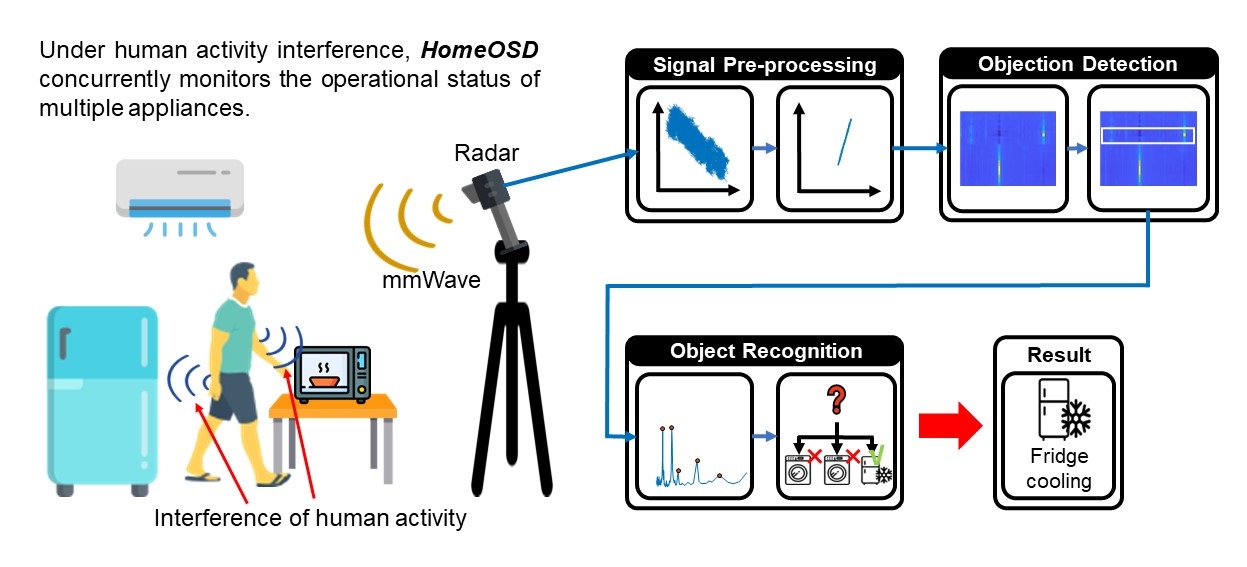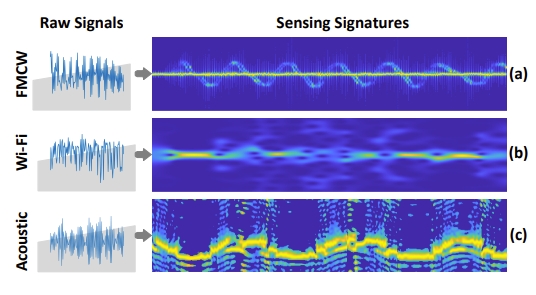HomeOSD: Appliance Operating-Status Detection Using mmWave Radar
Within the context of a smart home, detecting the operating status of appliances in the environment plays a pivotal role, estimating power consumption, issuing overuse reminders, and identifying faults. The traditional contact-based approaches require equipment updates such as incorporating smart sockets or high-precision electric meters. Non-constant approaches involve the use of technologies like laser and Ultra-Wideband (UWB) radar. The former can only monitor one appliance at a time, and the latter is unable to detect appliances with extremely tiny vibrations and tends to be susceptible to interference from human activities. To address these challenges, we introduce HomeOSD, an advanced appliance status-detection system that uses mmWave radar. This innovative solution simultaneously tracks multiple appliances without human activity interference by measuring their extremely tiny vibrations. To reduce interference from other moving objects, like people, we introduce a Vibration-Intensity Metric based on periodic signal characteristics. We present the Adaptive Weighted Minimum Distance Classifier (AWMDC) to counteract appliance vibration fluctuations. Finally, we develop a system using a common mmWave radar and carry out real-world experiments to evaluate HomeOSD’s performance. The detection accuracy is 95.58%, and the promising results demonstrate the feasibility and reliability of our proposed system. Download PDF






